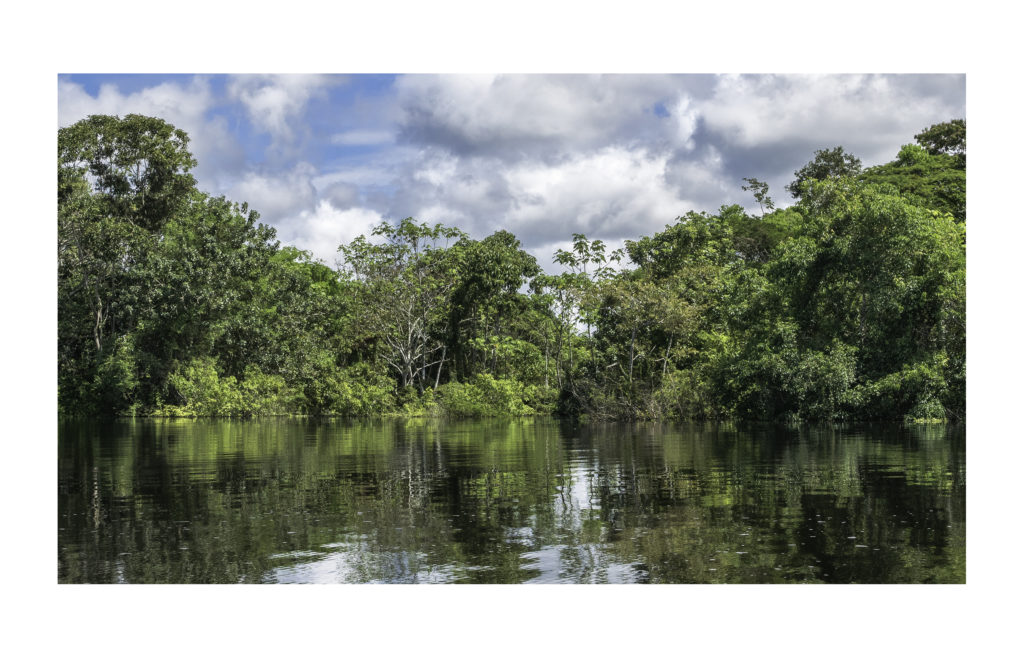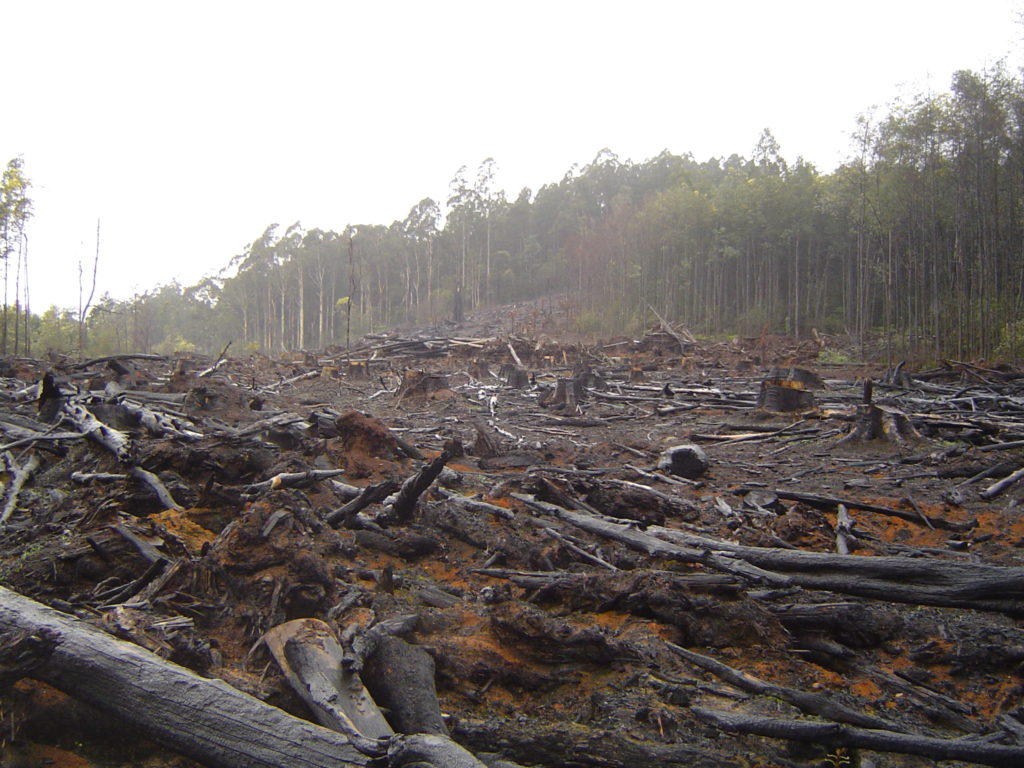Confession of a Tree Hugger

One of my favorite things in the world is trees. I’ve planted them since I was a kid. It’s an exquisite pleasure placing their delicate roots in the soil and watching them grow, harbor animals, and change with the seasons. So, you’d think I’d be elated reading the news about the initiative to combat climate change by planting one trillion trees. The hope is that they’ll replace those trees lost due to deforestation, and in time, capture carbon dioxide emissions, which are causing global warming. But, alas, here is my confession. I was unduly alarmed to see that organizations and world leaders (including Trump, who doesn’t even believe in climate change) adopting the idea. The notion that climate change could be mitigated by mass planting of young trees is both unrealistic and dangerous.
Deforestation is taking place at an alarming rate. According to NASA, “about 7.3 million hectares (18 million acres) of forest are lost every year, and roughly half of Earth’s tropical forests have already been cleared.”
The leading cause is animal agriculture. Vast amounts of land are used to raise farmed animals, and one third of Earth is used for growing grains to feed them. The Guardian noted: “93% of the soya we consume, which drives the destruction of forest, savannah and marshland, is embedded in meat, dairy, eggs and fish, and most of it is lost in conversion. When we eat it directly, much less of the crop is required to deliver the same amount of protein.”
Not only is animal agriculture (including “local,” “organic,” “free range,” ”cage free,” and “grass fed” farms) the cause of deforestation, it’s also a major contributor to greenhouse gas emissions, and the leading cause of the highly potent methane emissions. Loss of trees and greenhouse emissions both lead to global warming, which results in more severe fires, which in turn are decimating even more forests. And if that’s not enough catastrophic destruction, animal farming is also the leading player in water and air pollution, and biodiversity loss.
What’s even more striking is that animal agriculture is extremely inefficient. A study, published in the journal Science, shows that a plant based diet can reduce global farmland by more than 75% and still feed the world. It states: “meat, aquaculture, eggs, and dairy use 83% of the world’s farmland and contribute 56 to 58% of food’s different emissions, despite providing only 37% of our protein and 18% of our calories.”
The idea that we need to waste resources (more on that later) on propagating and planting trees, so we can keep uprooting mature ones for culinary preference, strikes me as both perilous and absurd. The skeptic I am likes to ask questions when encountering such seemingly simple solutions to very complex problems, so I decided to dig beneath the surface of the mass tree planting headlines.
What prompted some of the hype was a recent study that estimated the potential of restoring forests as a possible strategy for mitigating climate change. The authors claimed that tree restoration is the most effective climate change solution. However, the paper was met with sharp criticism from experts, and the scientific community debunked the paper’s conclusions. “The claim that global tree restoration is our most effective climate change solution is simply incorrect scientifically and dangerously misleading,“ wrote researchers in Science.
The study has raised many questions about its merit. One question is, how much carbon would be released to the atmosphere by reforestation? I couldn’t find a specific answer to that question in the literature. As an agricultural scientist I know that propagation and growing tree seedlings are both carbon-emitting processes. They require a lot of energy (derived from fossil fuels), fertilizers, pesticides, water, land, and labor. Therefore, the entire process of propagating and planting mass tree seedlings will in fact be emitting far more carbon than absorbing it.
How long will it take for mass planting to accomplish the needed positive net carbon balance? For the planted trees to reach maturity and store carbon it will take at least a century or two. As one scientist explained: “If we follow the paper’s recommendations reforesting an area the size of the United States and Canada combined (1 to 2 billion hectares) could take between one and two thousand years, assuming we plant a million hectares a year and that each hectare contains at least 50 to 100 trees to create an appropriate treetop canopy cover.”
Many other scientific issues were raised, such as how much carbon will the new forests store (the paper’s model projects a higher rate than previous studies had found), how much will be lost through the process, and concerns about the cost and available land limitations which were not considered in the paper.
But let’s assume that the net carbon of the newly planted trees would be positive in a century or two and we don’t care how long it takes and how much it costs. We are willing to use fossil fuel, chemicals, labor, land and enormous funds with the hope that the trees will sequester enough carbon in the distant future. Still, there are many other important problems we need to consider when we, humans, meddle with Mother Nature by altering earth flora on a large scale.
Studies demonstrate that artificial forests can harm the environment by damaging ecosystems, limiting biodiversity, and drying up water supplies. A group of scientists are urging caution regarding mass planting. They are led by Dr. Joseph Veldman, who specializes in fire ecology of savannas and forests; he stated: “Few people realize that planting trees in the wrong places can actually damage ecosystems, increase wildfire intensity and exacerbate global warming.”
One of the cascading consequences is reduced water supplies in local streams and rivers. For example, in grasslands, shrublands and cropland worldwide where forests were created, streams shrank by 52% and 13% of all streams dried up completely for at least a year.
Both Japan and Ireland have experienced negative ecological consequences from mass tree planting. In Ethiopia, reforestation damaged the land by causing soil acidity, and destroying native plants. It also harmed wild animals as this article explains: “Increasing the tree cover in savanna and grassland can mean plant and animal species which prefer open, well-lit environments are pushed out. Studies from South Africa, Australia, and Brazil indicate that unique biodiversity is lost as tree cover increases… Not only do herbivores like zebra and antelope who feed on grass have less to eat, but more trees may also increase their risk of being eaten as predators have more cover.”
Trees are essential not only for carbon storage but also as a wildlife habitat. The recent fires in Australia tragically illustrated that new trees would not be able to accomplish that, and it may be too late for the animals who survived the fires but who lost their habitat. As the PBS NewsHour reported, some of the critical assets for the native wild animals, such as tree hollows used as den sites or as refuges, created over many years only by fungus and termites, will take centuries to get back.
A vegan diet is probably the single biggest way to reduce your impact on planet Earth, not just greenhouse gases, but global acidification, eutrophication, land use and water use
Focusing on a dubious and decidedly long-term solution for global warming is a moral hazard. It shifts attention away from the most immediate actions we should take—stopping deforestation and reducing emissions by changing culinary choices. It’s the low-hanging fruit and can be accomplished by switching to a plant-based diet. Joseph Poore, at the University of Oxford, who led research on the topic which was published in Science, said: “A vegan diet is probably the single biggest way to reduce your impact on planet Earth, not just greenhouse gases, but global acidification, eutrophication, land use and water use,” and “It is far bigger than cutting down on your flights or buying an electric car.”
A plant-based diet may seem strange and bothersome for some people (especially baby boomers who grew up in a different time), but it’s surprisingly easy and by far the most effective and direct solution for climate change and environmental pollution. Thankfully veganism is a fast growing phenomenon among young people, like climate activist Greta Thunberg, who understand how urgent global warming is for their generation.
Each time we choose to bite on a piece of animal flesh or lick ice cream made with cow’s milk, the price is high: lost trees, emissions, pollution, and the precious lives of animals. It’s time to protect our forests and switch to a plant-based diet. For the planet and all its wonderful inhabitants.

Did you know?
If a person stops eating meat,
about 555 mature trees
can be saved in one lifetime!
Featured top picture: Amazon rainforest, by Marc Perlish

Thank you again Zahava for writing these horrific facts. It’s sad.
I believe we are over the point of saving the world. But we can still save many animals. They will do better without humans anyway.
Thanks very much Dorit!
Well done Zahava. Once again you unpacked a complex problem by taking the time to research it and share information and points of view that aren’t widely disseminated. Reading past the headlines, asking probing questions and looking for answers is an approach we should all adopt. We see where the attraction of simple stories gets us. There are many actions we can take and choosing a plant based diet will have the most impact on the looming problem of global warming.
Beautifully done. You have a gift for making the everyday reality remarkably indelible. There is so much to appreciate here—the exhaustive research, the political, moral, and even personal worlds colliding with each other, and of course the perfectly logical conclusion of eating a plant-based diet. Thank you for being a discriminating tree hugger!
Robin, thanks for your kind words, and your humor!
Very nice discussion on the subject. It seemed like a simple solution to capture carbon and reduce global warming but you explained that it’s not simple and not straightforward at all . Thanks for explaining, now I have a better understanding of the subject.
Much appreciated Vered. It’s gratifying to know that the blog post broadened your view. Writing it did the same for me. I didn’t know how ignorant I was about this issue until I started researching it!
Excellent article, and very well written. Time has never been on our side, and today this is even more true. The writer makes this clear in purely logical and scientific terms, as if the absence of animal cruelty was not enough.
Thanks for kudos Ralph! I appreciate your input and encouragement and wish more people were like you, willing to look at the simple facts and make the logical, ethical and empathetic stance.